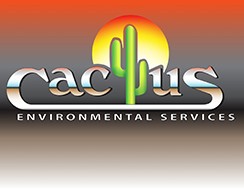
Types of Hazardous Waste

The increasing need for new consumer products has led to an upsurge in the number of manufacturing industries globally. However, industrial processes can release toxic elements and waste and, as a result, pose a lot of danger to the environment and human health. These dangers are particularly true if manufacturing companies lack proper disposal measures to deal with the different types of hazardous waste.
At Cactus Environmental Services we cannot discuss hazardous waste disposal services without mentioning our premium hazardous waste disposal services, including consolidation, identification, and clean-up.
We serve Dallas-Fort Worth and its surrounding areas, including Oklahoma, Louisiana, and Arkansas and handle different types of hazardous waste as defined by hygienists.
The Five Types of Hazardous Waste
What is hazardous waste? These are dangerous products released by manufacturing industries. Hazardous waste may be in the form of gasses, liquids, and solids. It poses potential threats to human health and the environment if improperly disposed of. EPA has identified various types of hazardous waste, including:
Listed Waste
Listed waste emanates from common manufacturing and industrial processes. These waste materials are discarded from commercial products. Listed waste can be classified into four categories; U-list, F-list, K-list, and P-list waste.
P and U list waste
P- and U-List wastes are industrial chemicals you can throw away when they are still in use. P-list wastes are acutely hazardous wastes that are harmful even in small quantities. However, most industries rarely generate acutely hazardous waste.
K-list waste
K-list wastes consist of sewage or sludge from specific businesses like companies. They are source-specific and are mostly released by wood preservation, pharmaceutical manufacturing, explosives, and pesticide manufacturing industries.
F-list waste
The F- list characterizes waste elements resulting from industrial and manufacturing processes. The EPA refers to these categories as non-specific source waste, and many include solvents used for cleaning or degreasing purposes.
F-listed waste may also include byproducts from electroplating and metal-finishing operations, such as spent anodes, filters, dust from grinding operations, and wastewaters.
Characterized Waste
Characteristic wastes proceed through the identification process based on the traits they exhibit. They are associated with reactivity, ignitability, toxicity, and corrosivity. Such wastes can lead to explosions and toxic fumes when heated, compressed, or mixed with water.
Reactivity
Characteristic wastes are dangerous and can release toxic vapors when combined with water, compressed, or heated. They may explode and release vapors, aerosols, and hazardous fumes.
Ignitability
Characteristic wastes spontaneously catch fire, have an ignition temperature below 140F (60C), or both under specific circumstances. They can cause burns to anyone handling them without proper protective gear.
Toxicity
If consumed or absorbed, toxic compounds have the potential to be fatal or damaging. Toxic substances lead to water pollution. If you release them into landfills, the ground absorbs them, which is harmful.
Corrosivity
Characterized wastes are famous for their corrosive properties. Corrosivity refers to anything that can rust, degrade, and melt through steel materials. Corrosive wastes are characterized by potent acidic and alkaline substances. These can react with a solid material or living tissue upon contact and destroy them.
Universal Waste
Universal waste is yet another type of hazardous waste produced frequently, including batteries, mercury-containing devices, insecticides, and bulbs. The main classifications of universal wastes include;
- Flammable liquids
- Radioactive gasses
- Flammable solids
- Organic peroxides
Mixed Waste
These are wastes that comprise dangerous or radioactive components. Mixed wastes are frequently created at laboratories or other comparable facilities. There are three sub-categories under which mixed wastes fall. These include; high, intermediate, and low-level mixed waste.
E-Waste
Technology advancements have brought about many gadgets and electronic accessories in the market, which is why E-waste is a growing concern globally. Such wastes include electronic garbage, among other electrical elements that are unwanted, non-functional, or nearing the end of their useful life.
Other materials such as old toasters, coffee machines, coolers, TV sets, printing presses, and old laptops are also considered e-waste. Such components are dangerous and harmful due to their metal parts, leading to lead accumulation in landfills and water bodies.
Reliable Hazardous Waste Removal Services in Dallas!
Cactus Environmental is renowned for offering premium hazardous waste disposal services. We serve Dallas and its environs and specialize in different types of hazardous waste. We will also offer many other services, including waste consolidation, identification, and clean-up. To learn more about our services, contact us for a free quote!
Disclaimer: Cactus strives to provide top-tier service for all industrial and commercial markets. For individuals needing residential services, please contact your city's Household Hazardous Waste Division.
